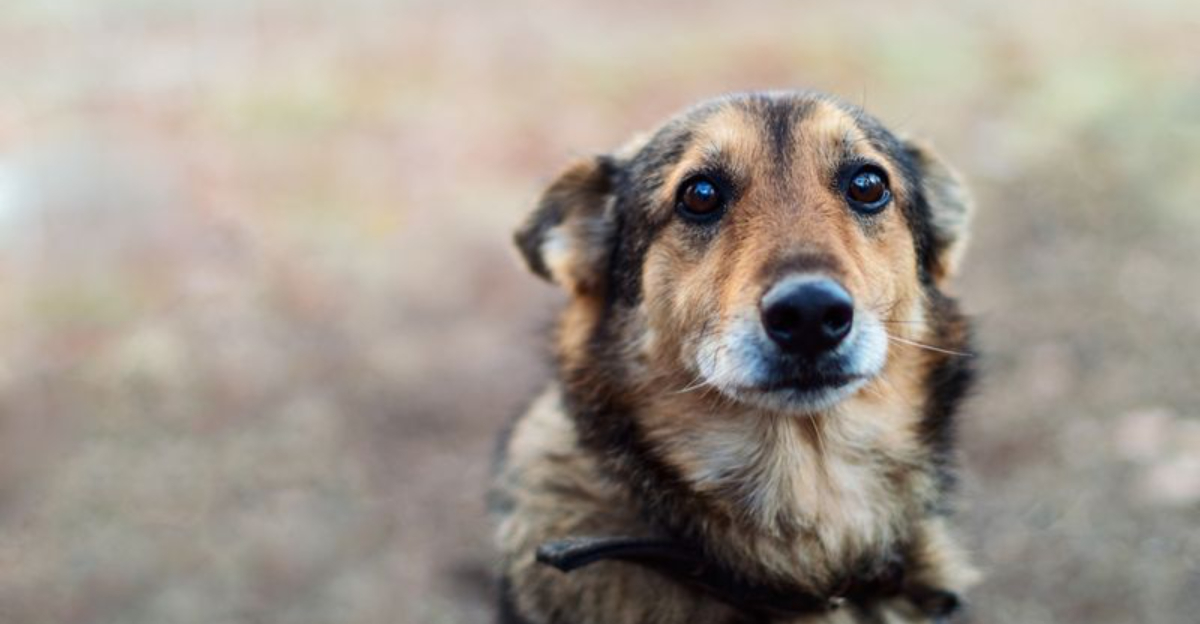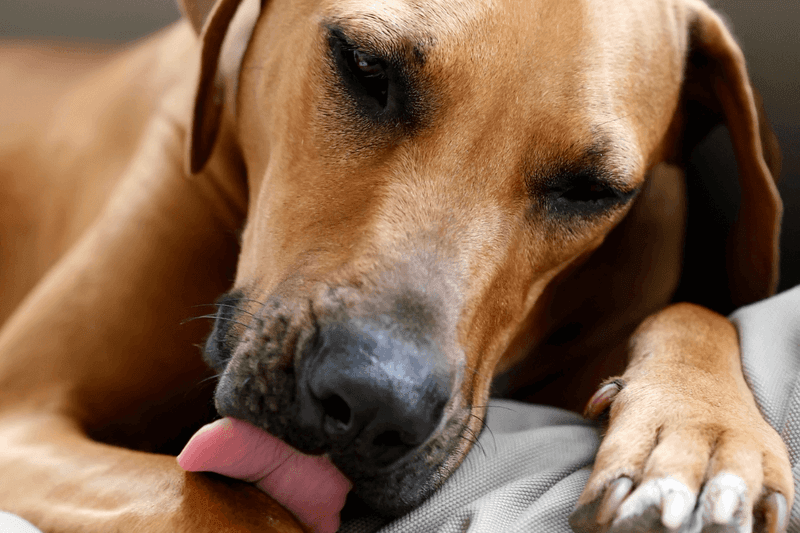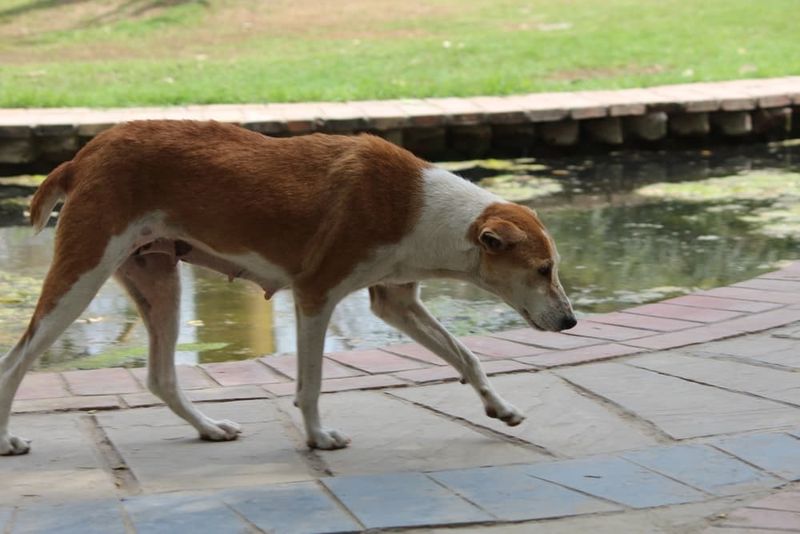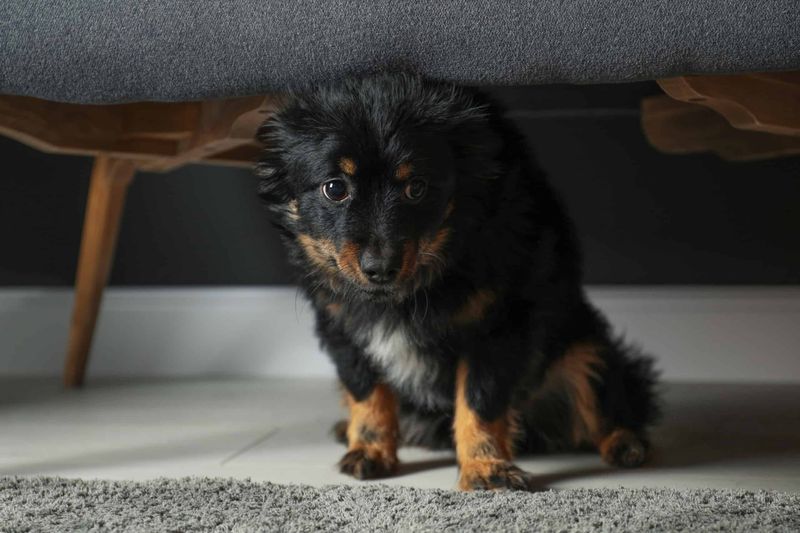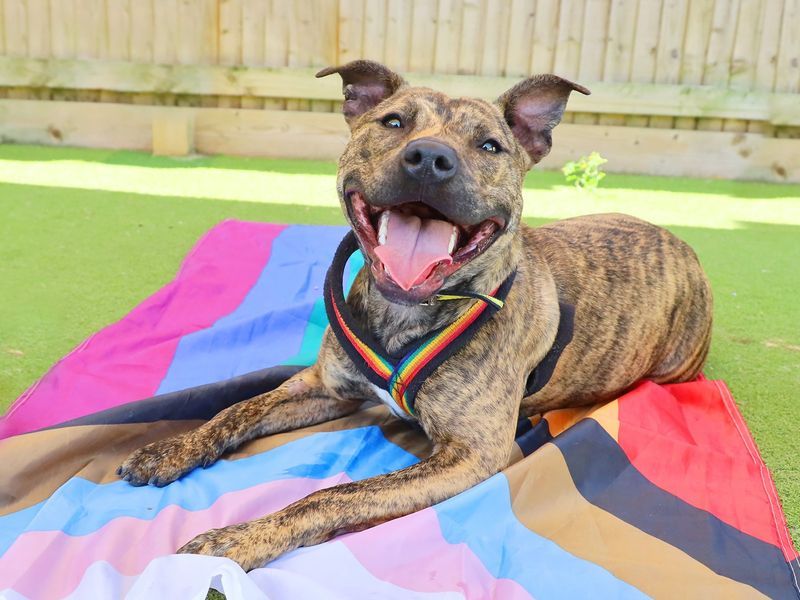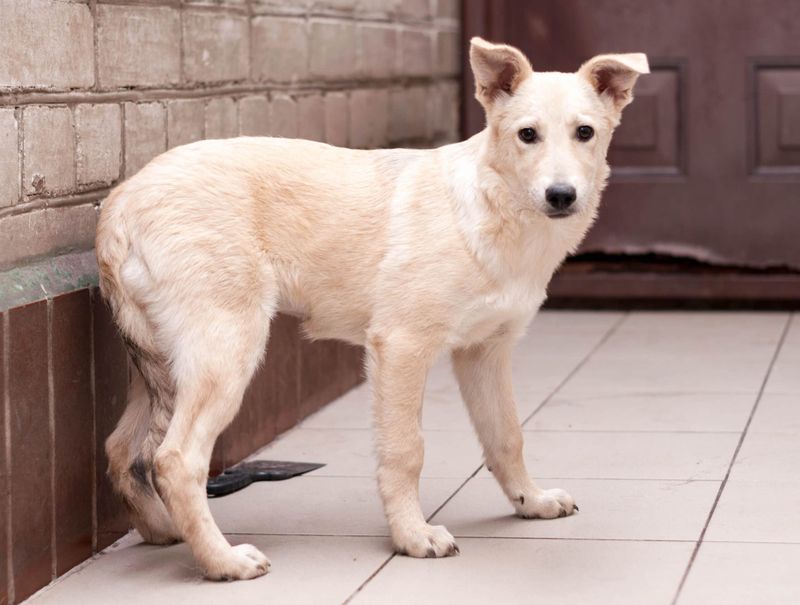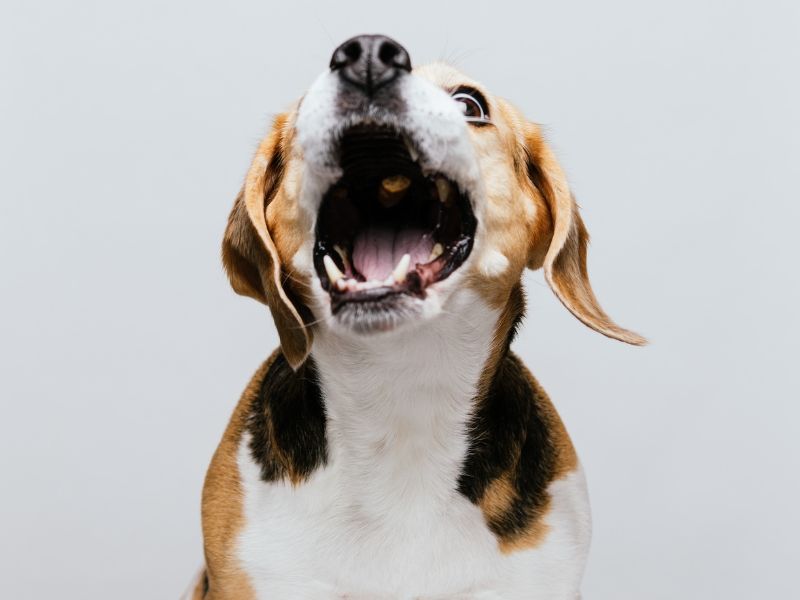Dogs, like humans, experience stress. However, they communicate it subtly, often leaving owners clueless. Recognizing these signals is crucial for a dog’s well-being. Understanding your furry friend’s stress cues can lead to a happier and healthier life together. Here are thirteen stress signals that many dog owners, myself included, overlooked, explained by my vet. Each signal reveals unique insights into a dog’s emotional world, helping you respond appropriately. Let’s explore these hidden stress signs and gain a deeper understanding of what your dog might be trying to tell you.
Yawning Often
Yawning isn’t just a sign of tiredness in dogs; it’s often a stress indicator. When my vet explained this, I was surprised to learn that repetitive yawning can reveal anxiety. Dogs use yawning to calm themselves down, especially in uncomfortable situations. I had always thought my dog was just sleepy. Noticing the context of the yawn is essential – if it’s happening outside of nap time, it might be stress-related. Understanding this helped me recognize when my dog needed reassurance. Now, I pay closer attention to the situations that cause these yawns.
Excessive Licking
Dogs often lick themselves to clean or when they enjoy a treat, but excessive licking can be a stress signal. My vet pointed out that when dogs lick too much, especially their paws, it might indicate anxiety or discomfort. At first, I thought it was just a grooming habit. However, noticing the frequency and context of the licking changed my perspective. Dogs might use licking as a coping mechanism, much like humans biting their nails. Recognizing this behavior helps address underlying stressors, ensuring a more relaxed pet.
Pacing Around
Pacing isn’t just a sign of restlessness; it’s a clear indicator of stress in dogs. When my vet described this, I realized my dog’s constant movement wasn’t just about energy. Dogs often pace when they’re anxious, trying to find comfort or release tension. Observing your dog’s pacing can reveal what triggers stress, whether it’s a change in environment or anticipation of an event. This newfound understanding has allowed me to intervene, providing comfort and reducing the frequency of this anxious behavior.
Drooling Excessively
While some dogs naturally drool more than others, excessive drooling can signal stress. My vet explained that when dogs drool out of context, it’s often related to anxiety. I used to dismiss it as excitement or hunger, but noticing the timing and circumstances made the difference. Dogs might drool more in unfamiliar settings or during loud noises. Understanding this allowed me to create a more calming environment for my dog, reducing stress-induced drooling. It’s a small change, but it makes a significant impact on their comfort.
Whimpering Sound
Whimpering isn’t just a call for attention; it can be a sign of distress. I learned from my vet that dogs often whimper when they’re anxious or scared. My dog’s quiet whimpers, once thought to be demands for treats, were actually pleas for comfort. Whimpering can indicate discomfort with a situation or environment, urging owners to investigate and alleviate the cause. This insight has transformed how I respond to my dog’s needs, ensuring she feels safe and understood. Recognizing whimpering as a stress signal has deepened our bond.
Avoiding Eye Contact
Eye contact avoidance in dogs can be a subtle sign of stress or discomfort. My vet highlighted that when dogs refuse to make eye contact, they might be feeling uneasy or submissive. I used to think my dog was just being stubborn or uninterested. Now, I understand it’s her way of communicating discomfort. This behavior often occurs in tense situations or around unfamiliar people or pets. Recognizing it has allowed me to create a more comfortable and reassuring environment, making my dog feel more at ease.
Hiding or Cowering
Dogs might hide or cower when they’re feeling stressed or scared. My vet explained that this behavior is a protective mechanism, much like humans seeking refuge. Hiding under furniture or in corners often indicates anxiety. I initially thought my dog was playing hide and seek. However, understanding this behavior has helped me identify stressors in her surroundings. Creating safe spaces and offering reassurance has reduced her need to hide, leading to a happier and more confident pet. This insight has been invaluable in improving her quality of life.
Panting Heavily
Panting is normal for dogs, especially after exercise, but excessive panting can indicate stress. My vet highlighted that when panting occurs without physical exertion, it might be stress-related. I used to attribute it to warm temperatures or thirst. Now, I recognize that situations causing anxiety often lead to heavy panting as a stress response. Identifying this cue has helped me address the root causes of stress, ensuring a calmer environment for my dog. Understanding panting as a stress signal has been eye-opening, changing how I care for her.
Tail Tucked
Tail tucking is a classic sign of fear or stress in dogs. My vet explained that when a dog’s tail is tucked, it often signifies anxiety or submission. I used to think my dog did this only when cold or shy. However, understanding it as a stress cue has changed my approach. This behavior is especially prevalent in new or overwhelming environments. Recognizing it has allowed me to provide reassurance and comfort, enabling my dog to navigate stressful situations with more confidence. It’s a small gesture that speaks volumes about their feelings.
Barking Excessively
Excessive barking isn’t just a nuisance; it’s a sign of stress or alertness. My vet pointed out that when dogs bark excessively, they’re often reacting to anxiety or an unfamiliar stimulus. I used to think my dog simply liked to be vocal. Recognizing barking as a stress signal has helped me identify triggers, from unfamiliar noises to strangers passing by. This insight has allowed me to implement training and environmental changes that reduce stress, leading to a quieter and more comfortable home for both of us.
Shedding More
Shedding is normal, but excessive shedding can signal stress in dogs. My vet explained that when dogs shed more than usual, it might be due to anxiety or changes in their environment. Initially, I attributed it to seasonal changes. However, understanding this link has helped me identify stressors affecting my dog. By addressing these, I’ve seen a noticeable reduction in shedding. This awareness has improved my dog’s comfort and health, demonstrating the importance of recognizing and addressing stress signals promptly.
Loss of Appetite
A sudden loss of appetite in dogs may signal stress or discomfort. My vet emphasized that when dogs refuse to eat, it often indicates anxiety or an underlying health issue. I used to think my dog was just being picky. Now, I understand it might be a response to stressors like new environments or changes in routine. This realization helped me address these stressors, encouraging a healthy appetite once more. Understanding the link between stress and appetite has been crucial in maintaining my dog’s well-being.
Destructive Behavior
Destructive behavior in dogs, like chewing furniture, can indicate stress or boredom. My vet explained that when dogs resort to destruction, they’re often expressing anxiety or frustration. I used to think my dog was just mischievous. Understanding this behavior as a stress signal has led me to provide more mental stimulation and exercise. This approach has significantly reduced destructive tendencies, improving our living environment. Recognizing and addressing these behaviors has been vital in fostering a harmonious relationship with my pet.
